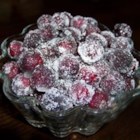So here's a quiz to test your knowledge of the botanical parts of the plants you eat. It's based on the quiz Barbara gave us:
https://drive.google.com/open?id=1ObhQ5wCn51mtWHBZMfuG7SJequkKlZnq
The answers can be found here:
https://drive.google.com/open?id=1X9KFYknBp77Ygygg84L-pYOFZNYTz_Eo
They are based on the University of Florida's 4H horticultural curriculum:
http://sfyl.ifas.ufl.edu/sarasota-docs/4-hrecordbooks/Judging_Hort.pdf
And if all of this "brain work" has given you an appetite, check out a pioneer recipe for "The First Pumpkin Pie - Sort of" from the PBS AutumnWatch New England series.
Dianne made her own healthier version of the pie from a "pie pumpkin." She cut the pumpkin in half along its "equator" and roasted it until the flesh was soft. She used the bottom half of a baked pie pumpkin for the shell, and hollowed out the baked flesh of the top half to make the pumpkin filling adding brown sugar, spices, and condensed milk. She skipped the fruit and spices that were called for in the recipe and used some of Trader Joe's Pumpkin Butter - so easy and tasty! Too bad the Puritans didn't have a store nearby... She poured the pumpkin filling into the shell and baked it at 350 until the filling was "set." Let the filling cool, then slice and serve right from the pumpkin shell. You can eat the shell and skin (or not if you don't like the skin texture).
If you are a purist, you can even use the native American Seminole pumpkin instead of the European variety. Seminole pumpkins have very hard shells, but your reward for halving them for baking is their especially sweet meat.
 This year we had a bumper crop of cranberries, so why not take advantage of the harvest, and add frosted cranberries to your dessert or snack table? Choose only very fresh berries and use them before they start to turn soft. The frosted cranberries can be stpred in the refrigerator and brought out an hour or two before serving time. They do have a limited shelf life, but don't worry - your diners will make short work of them. See the recipe at the FirstCoast Flora Luncheon Recipes page.
This year we had a bumper crop of cranberries, so why not take advantage of the harvest, and add frosted cranberries to your dessert or snack table? Choose only very fresh berries and use them before they start to turn soft. The frosted cranberries can be stpred in the refrigerator and brought out an hour or two before serving time. They do have a limited shelf life, but don't worry - your diners will make short work of them. See the recipe at the FirstCoast Flora Luncheon Recipes page.Of course, you know now that BOTH pumpkin pies and frosted cranberries are made from the FRUIT of the plant!



